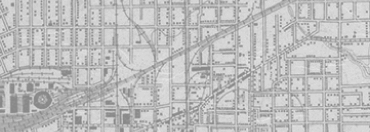


Back
Photograph of courtroom sketch of witness Dr. Robert Stubblefield at Ruby trial
Photograph of courtroom pencil sketch on paper by CBS News courtroom artist Howard Brodie. The sketch shows witness Dr. Robert Stubblefield during the Jack Ruby trial on March 11, 1964. The sketch shows witness Dr. Robert Stubblefield seated in the witness stand with his hands folded in his lap. Handwritten captions in the upper right corner and the bottom right corner of the image respectively read "Dr. Stubblefield" and "3/11/64." Brodie made the original pencil sketches for CBS News during the trial of Jack Ruby after the judge barred cameras from the courtroom. Brodie then gave Joe Tonahill this photograph of a courtroom sketch as part of a collection of more than 40 in 1964.
Photograph of courtroom sketch of witness Dr. Robert Stubblefield at Ruby trial
03/11/1964
Paper
14 9/16 × 19 3/16 in. (37 × 48.7 cm)
Tonahill Family Partners Collection/The Sixth Floor Museum at Dealey Plaza
2014.034.0021
Howard Brodie (1915-2010) was a sports artist for the San Francisco Chronicle when he enlisted in the U.S. Army with America's entry into World War II. He ultimately became one of the best-known sketch artists of the war, frequently published in the weekly U.S. military magazine, Yank, which ran from June 1942 to December 1945. After the war, Brodie spent the next thirty-five years as a courtroom artist, attending several notable trials including the Chicago Seven, Charles Manson and, of course, the Jack Ruby trial in 1964. For the Ruby trial, Brodie worked as a CBS-TV artist correspondent. Mr. Brodie recorded an oral history with the Museum in 2006. -- Stephen Fagin, Curator
At the time of the Jack Ruby trial in 1964, Dr. Robert L. Stubblefield was professor and chairman of the Department of Psychiatry at UT Southwestern Medical School and Chief of Psychiatry at the adjacent Parkland Memorial Hospital in Dallas. (In Volume 6 of the Ruby Trial court transcript, Stubblefield is incorrectly identified as the "Chief of Surgery" instead of Psychiatry.) He came into that position in July 1957 after serving as staff psychiatrist at the National Institute of Mental Health and later at the University of Colorado School of Medicine. Judge Joe B. Brown had called Dr. Stubblefield in January 1964 and consulted him about the benefits of a mental examination of Jack Ruby. Stubblefield first met with Ruby on January 27, 1964, at the Dallas County Jail. Based on his examination of Ruby, Stubblefield testified that he felt that Ruby was both competent to stand trial and legally sane. However, he did state that Ruby "is and was an emotionally unstable person."In later years, some assassination researchers have pointed out that in addition to his examination of Jack Ruby, Dr. Stubblefield also conducted psychiatric examinations of both right-wing activist Major General Edwin Walker and Dallas resident Silvia Odio (who allegedly met Lee Harvey Oswald in September 1963), two figures who are referenced in Kennedy assassination conspiracy theories. -- Stephen Fagin, Curator
Photograph of courtroom sketch of witness Dr. Robert Stubblefield at Ruby trial
Photograph of courtroom pencil sketch on paper by CBS News courtroom artist Howard Brodie. The sketch shows witness Dr. Robert Stubblefield during the Jack Ruby trial on March 11, 1964. The sketch shows witness Dr. Robert Stubblefield seated in the witness stand with his hands folded in his lap. Handwritten captions in the upper right corner and the bottom right corner of the image respectively read "Dr. Stubblefield" and "3/11/64." Brodie made the original pencil sketches for CBS News during the trial of Jack Ruby after the judge barred cameras from the courtroom. Brodie then gave Joe Tonahill this photograph of a courtroom sketch as part of a collection of more than 40 in 1964.
Photograph of courtroom sketch of witness Dr. Robert Stubblefield at Ruby trial
03/11/1964
Photographs
Jack Ruby trial
Sketches
Witnesses
Trials
Artist
Artwork
Brodie, Howard
Stubblefield, Robert, M.D.
CBS News
Dallas
Paper
14 9/16 × 19 3/16 in. (37 × 48.7 cm)
Tonahill Family Partners Collection/The Sixth Floor Museum at Dealey Plaza
2014.034.0021
Howard Brodie (1915-2010) was a sports artist for the San Francisco Chronicle when he enlisted in the U.S. Army with America's entry into World War II. He ultimately became one of the best-known sketch artists of the war, frequently published in the weekly U.S. military magazine, Yank, which ran from June 1942 to December 1945. After the war, Brodie spent the next thirty-five years as a courtroom artist, attending several notable trials including the Chicago Seven, Charles Manson and, of course, the Jack Ruby trial in 1964. For the Ruby trial, Brodie worked as a CBS-TV artist correspondent. Mr. Brodie recorded an oral history with the Museum in 2006. -- Stephen Fagin, Curator
At the time of the Jack Ruby trial in 1964, Dr. Robert L. Stubblefield was professor and chairman of the Department of Psychiatry at UT Southwestern Medical School and Chief of Psychiatry at the adjacent Parkland Memorial Hospital in Dallas. (In Volume 6 of the Ruby Trial court transcript, Stubblefield is incorrectly identified as the "Chief of Surgery" instead of Psychiatry.) He came into that position in July 1957 after serving as staff psychiatrist at the National Institute of Mental Health and later at the University of Colorado School of Medicine. Judge Joe B. Brown had called Dr. Stubblefield in January 1964 and consulted him about the benefits of a mental examination of Jack Ruby. Stubblefield first met with Ruby on January 27, 1964, at the Dallas County Jail. Based on his examination of Ruby, Stubblefield testified that he felt that Ruby was both competent to stand trial and legally sane. However, he did state that Ruby "is and was an emotionally unstable person."In later years, some assassination researchers have pointed out that in addition to his examination of Jack Ruby, Dr. Stubblefield also conducted psychiatric examinations of both right-wing activist Major General Edwin Walker and Dallas resident Silvia Odio (who allegedly met Lee Harvey Oswald in September 1963), two figures who are referenced in Kennedy assassination conspiracy theories. -- Stephen Fagin, Curator









